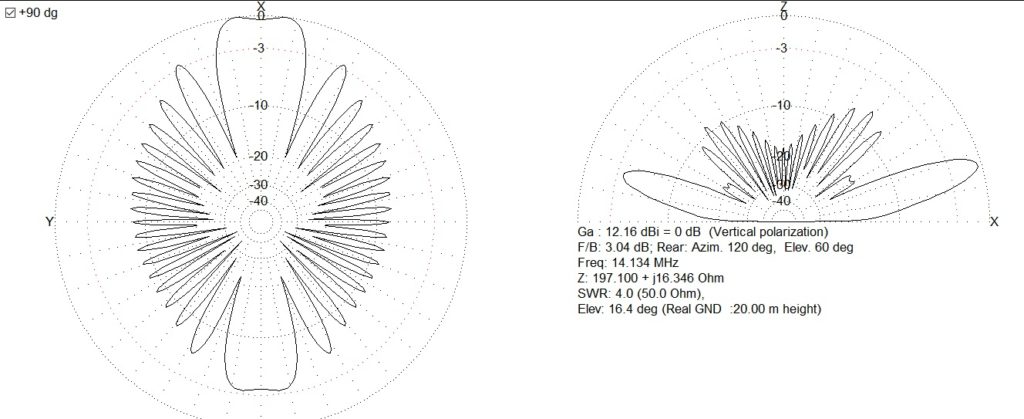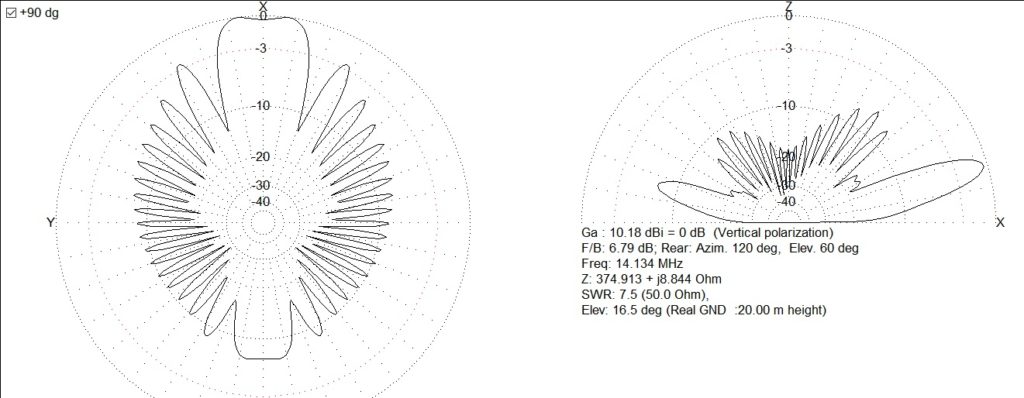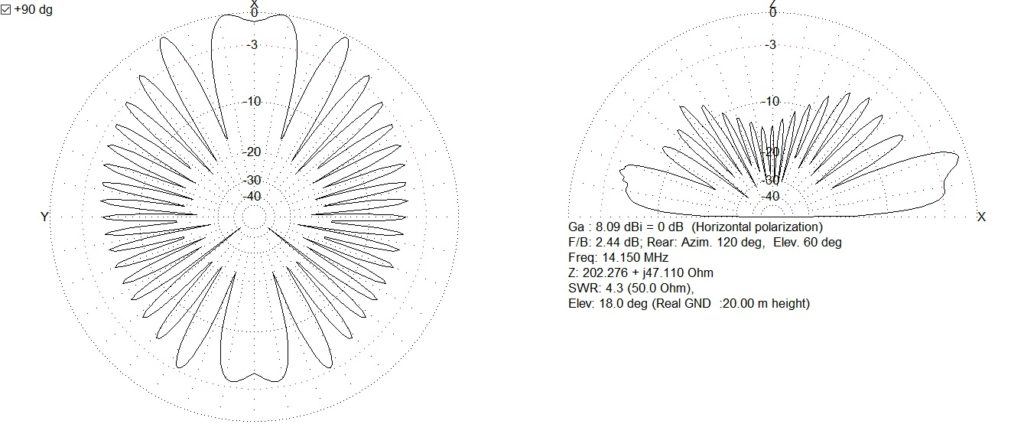The DL-1000, which is the defense’s telephone wire, consists of 7 strands. 4 from copper and 3 galvanized steel wires and an insulating coating. It is popular as antenna wire. The question is how it stands against copper wire regarding losses on short wave.
The MMANA simulation program allows you to select materials in the antenna conductors. The difference in material losses between copper and steel wire amounts to more than 3 dB for a 20m dipole.
To make a practical measurement, a dipole for 14 MHz was mounted with the center 7 meters above ground and the ends one meter lower. A MINI VNA was connected to the 37 meter long RG 213 coaxial cable and the length was retracted. However, the cable is simulated as loss-free.
In addition to 1.5 square mm copper, 1 mm plastic coated soft steel wire was used, which is used in the garden.
The feed impedance was measured at the resonance point when it was pure resistive.
Results:
Impedance ohm
Copper 53
DL 1000 64.7
Steel wire 74.2
Thus, an additional loss resistance of 11.7 ohm for DL 1000 and 21.2 ohm for steel wire. This corresponds to 18% or 0.85 dB extra power loss for DL 1000 and 28.6% or 2.3 dB for the steel wire.
Additional information:
The DC resistance of a strand of DL1000 is 7 ohms/100m.
I have simulated what happens with an LW of 100 meters at 14 MHz:
When I measured a dipole, the feed impedance increased by about 12 ohms when I used the DL1000 instead of the FK 1.5. This means that a 12 ohm loss resistor is in series with the copper wire feed impedance. For steel wire, the corresponding loss resistance was 21 ohms. I then put the corresponding loss resistance in all the current maxima on the long wire. One can see it as 10 series-connected half-wave dipoles. The result was that a 100 meter long wire of 14 MHz with the DL1000 had 1.6 dB of lower gain than an LW of copper! For a half-wave dipole, the corresponding losses were 0.85 and 2.3 dB, respectively. The longer the antenna is, the more important with good material in the wire (and, of course, low losses in the ground). In figures: Gain Cu = 10.7 dBi, Gain DL1000 = 9.13 dBi and Gain steel wire = 8.44 dBi. The latter result does not correspond to what you get if you choose steel as material in the antenna wire in MMANA. Then Gain = 7.1 dBi ie 3.63 dB worse than with copper. The same goes for half-wave dipoles. By comparison, a 3 element monoband has a gain of about 12 to 13 dBi.
If the antenna length is increased to 200 meters, the gain increases:
Gain Cu = 12.16 dBi, Gain DL1000 = 10.18 dBi ie an additional 1.43 (Cu) and 1.05 dB (DL1000) respectively. For steel wire the gain is then 8.1 dBi.
Below a 10 wavelength long wire 1 wavelength up on 14 MHz.
With Copper Line: 
With (a half from) DL1000: 
With steel wire:

